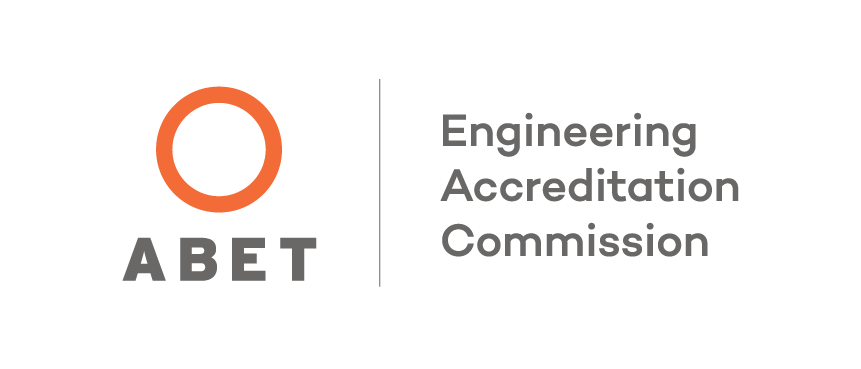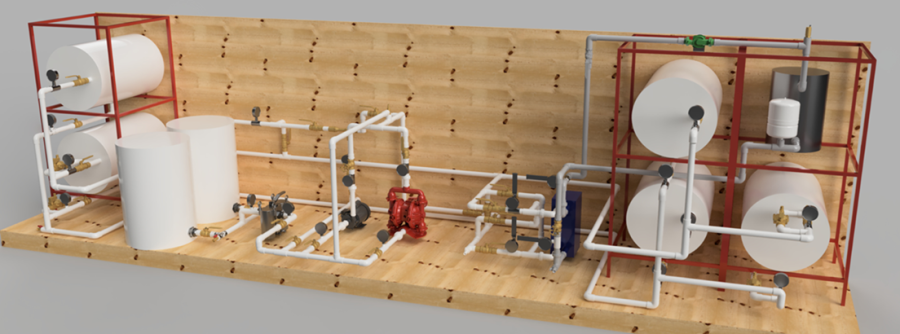
If you are fascinated by ships and the way they are powered and controlled, consider majoring in Marine Engineering. In this program, you will learn to design, operate and maintain marine and industrial power plants.

Accreditation
The Marine Engineering program is accredited by the Engineering Accreditation Commission (EAC) of ABET, under the commission's General Criteria and Program Criteria for Naval Architecture and Marine Engineering.
Academic Program
Marine Engineering courses focus on electrical science, math and the sciences, and teach students to think abstractly. You will learn about the operation and design of power-generating systems aboard ships. Learning in Marine Engineering goes well beyond the classroom. You will spend your time in labs, designing, building and testing ways to generate and deliver power to ships.
Degree Awarded
Bachelor of Engineering
Professional Experience Available
- U.S. Coast Guard Engine License
See the Career Options and Educational Pathways tab for more information.
Degree Curricula and Flowcharts
The Marine Engineering Degree Curricula and Pre-Requisite Flowcharts may be found at the link below.
Degree Curricula and Flowcharts
Program Educational Objectives
The objectives of this program are for graduates to
- become engineers who have the ability to practice the design, service, or operation of marine or industrial power systems, and
- have the ability to take professional leadership positions that require an extensive engineering background
Student Outcomes
Marine Engineering graduates of Maritime College will possess:
- an ability to identify, formulate, and solve complex engineering problems by applying principles of engineering, science, and mathematics
- an ability to apply engineering design to produce solutions that meet specified needs with consideration of public health, safety, and welfare, as well as global, cultural, social, environmental, and economic factors
- an ability to communicate effectively with a range of audiences
- an ability to recognize ethical and professional responsibilities in engineering situations and make informed judgments, which must consider the impact of engineering solutions in global, economic, environmental, and societal contexts
- an ability to function effectively on a team whose members together provide leadership, create a collaborative and inclusive environment, establish goals, plan tasks, and meet objectives
- an ability to develop and conduct appropriate experimentation, analyze and interpret data, and use engineering judgment to draw conclusions
- an ability to acquire and apply new knowledge as needed, using appropriate learning strategies.
- The structure of the curriculum must provide both breadth and depth across the range of engineering topics in Marine Engineering.
- The curriculum must include applications of probability and statistics, fluid mechanics, dynamics, and engineering design at the system level.
- The curriculum must include energy/propulsion systems, materials properties, and instrumentation appropriate to Marine Engineering.
LEARN MORE ABOUT THE MARINE ENGINEERING PROGRAM
Marine Engineering Enrollment and Degree Data
Calendar Year | 1st Enrollment Year | 2nd Enrollment | 3rd Enrollment | 4th Enrollment Year | 5th Enrollment Year | B.E. Degrees Awarded |
|---|---|---|---|---|---|---|
| 2023 | 24 | 16 | 8 | 5 | 4 | 6 |
| 2022 | 20 | 10 | 5 | 6 | 3 | 10 |
| 2021 | 18 | 8 | 7 | 12 | 0 | 22 |
| 2020 | 14 | 10 | 13 | 15 | 5 | 15 |
| 2019 | 14 | 14 | 18 | 19 | 2 | 17 |
| 2018 | 23 | 20 | 22 | 17 | 3 | 19 |
| 2017 | 26 | 24 | 21 | 18 | 5 | 31 |
| 2016 | 29 | 23 | 21 | 20 | 8 | 14 |
| 2015 | 32 | 27 | 20 | 11 | 7 | 16 |
| 2014 | 31 | 21 | 14 | 13 | 3 | 25 |
| 2013 | 32 | 15 | 16 | 16 | 6 | 27 |
| 2012 | 20 | 24 | 19 | 19 | 9 | 22 |
For more information, contact the Office of Admissions.
| Name | Title / Position | Primary Program | Phone | |
|---|---|---|---|---|
| Aragon, Roland | Instructional Support Technician | Engineering Department Staff | Email me | 718.409.7430 |
| Balasubramanian, Hari | Assistant Professor | Naval Architecture | Email me | 718.319.1143 |
| Breglia, Joseph | Senior Lecturer | Facilities Engineering | Email me | 718.409.7429 |
| Burke, Richard | Emeritus Professor | Naval Architecture | Email me | 718.409.7411 |
| Cui, Weili | Associate Professor | Mechanical Engineering | Email me | 718.409.3538 |
| Delo, Carl | Professor | Mechanical Engineering | Email me | 718.409.7412 |
| Feng, Fei | Assistant Professor | Electrical Engineering | Email me | 718.409.7416 |
| Fountain-Toomer, Deborah | Office Manager, Assistant to the Chair | Engineering Department Staff | Email me | 718.409.7411 |
| Fridline, Daniel | Associate Professor, Chair of Engineering | Mechanical Engineering | Email me | 718.409.7414 |
| Gerr, Dave | Senior Lecturer | Naval Architecture | Email me | 718.409.5007 |
| Gorivodsky, Dmitry | Visiting Lecturer | Engine License | Email me | 718.409.7411 |
| Gosselin, Kathryn | Associate Professor, Coordinator of Undergraduate Studies and Advising | Mechanical Engineering | Email me | 718.409.1769 |
| Grosso, Saverio | Lecturer | Facilities Engineering | Email me | 718.409.7351 |
| Gruffi, Robert | Adjunct | Engine License | Email me | 718.409.7411 |
| Gyves, Thomas | Associate Professor | Mechanical Engineering | Email me | 718.409.7426 |
| James, Jemerson | Assistant Professor | Naval Architecture | Email me | 718.409.5007 |
| Jeon, Jaeseok | Associate Professor | Electrical Engineering | Email me | 718.409.5560 |
| Kalbfell, Robert | Adjunct | Engine License | Email me | 718.409.7411 |
| Kidd, Bob | Associate Professor | Mechanical Engineering | Email me | 718.409.7425 |
| LaFleur, Ronald | Associate Professor | Mechanical Engineering | Email me | 718.409.7420 |
| Liu, Ziqian | Professor | Electrical Engineering | Email me | 718.409.7423 |
| Martinez, Alberto | Instructional Support Technician | Engineering Department Staff | Email me | 718.409.7413 |
| Mellusi, Anthony | Instructional Support Technician | Engineering Department Staff | Email me | 718.319.1186 |
| Mohamed, Mohamed | Assistant Professor | Electrical Engineering | Email me | 718.409.5336 |
| Munsch, Charles | Professor | Naval Architecture | Email me | 718.409.7417 |
| Roeckle, Roland | Adjunct | Engine License | Email me | 718.409.7411 |
| Strez, Catherine | Associate Professor | Marine Engineering | Email me | 718.409.7415 |
| Vukelic, John | Instructional Support Technician | Engineering Department Staff | Email me | 718.409.7439 |
| Winfrey, Leigh | Professor | Mechanical Engineering | Email me | 718.319.2046 |
| Fall Semester | Fall Semester | Spring Semester | Spring Semester | NOTES | ||
|---|---|---|---|---|---|---|
| Regimental New Student (Campus Resident) | Traditional Student (Campus Resident) | Regimental Student (Campus Resident) | Traditional Student (Campus Resident) | |||
| In-State | $14,155.50 | $13,195.50 | $13,025.50 | $12.945.50 | Rates apply to eligible veterans and their dependents. | |
| In-Region | $15,925.50 | $14,965.50 | $14,795.50 | $14,715.50 | ||
| Out-of-Region | $19,605.50 | $18,645.50 | $18,475.50 | $18,395.50 | ||
| International | $20,807.50 | $19,847.50 | $20,135.50 | $20,055.50 |
Capstone Design
In Marine Engineering Design II and III, the students were tasked with creating a lab for the 3rd class students to use aboard the TSES VII. The purpose of the lab was to give those students a chance to familiarize themselves with various engine systems in a lab setting. This includes lining up piping from ballast tanks to sea chests, place a duplex strainer in service or bypass mode, demonstrate cooling via jacket water in a flat plate heat exchanger, and operating centrifugal or positive displacement pumps.

